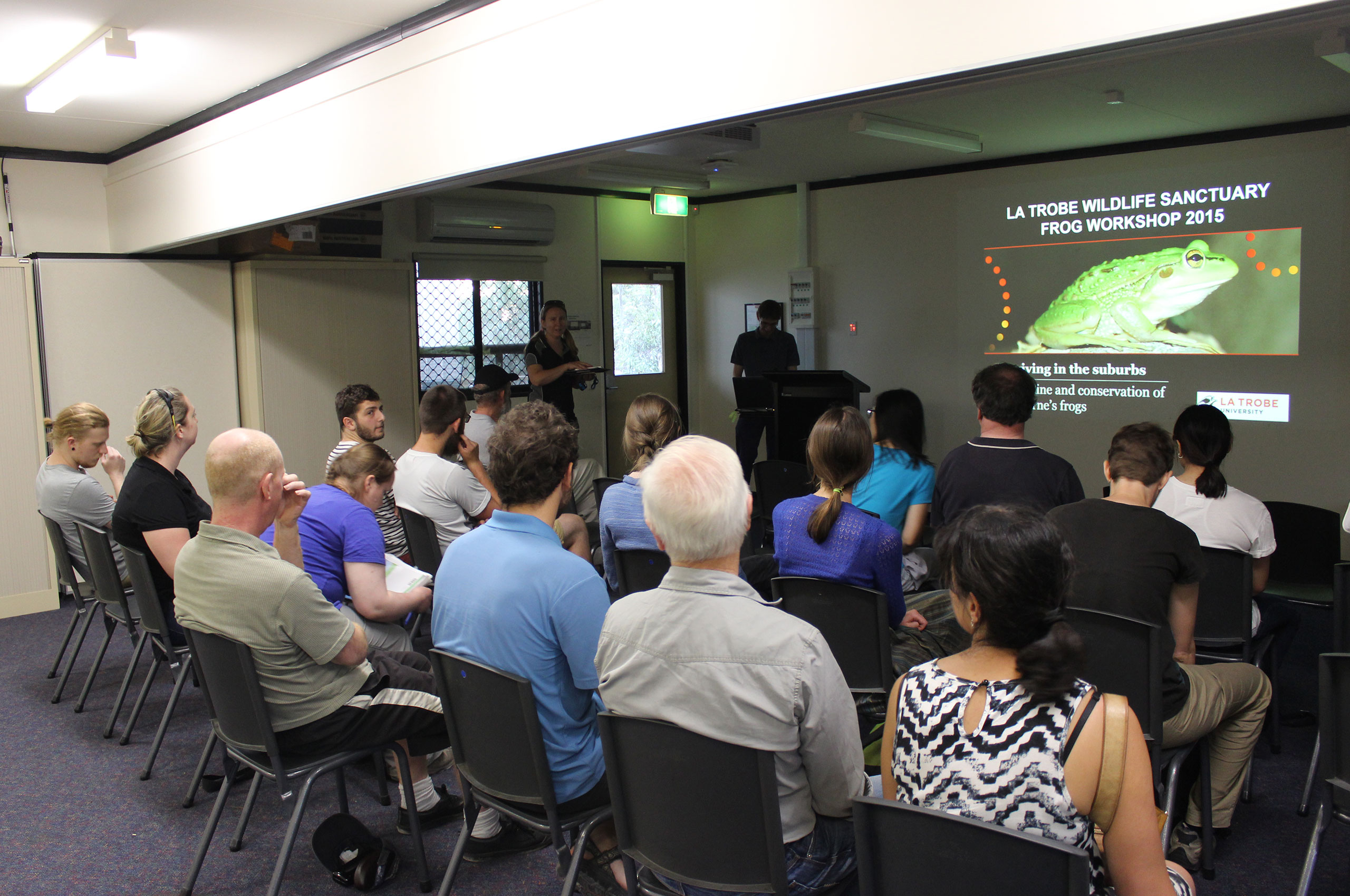Citizen Science

The Sanctuary’s primary aim is to provide opportunities for learning about indigenous flora and fauna through engaging with the community.
The Sanctuary offers valuable habitat in an otherwise suburban desert and is linked to other large tracts of remnant grassy woodland such as Gresswell Forest and Gresswell Hill Nature Conservation Reserves by the revegetated Gresswell Habitat Link.
Citizen science involves the collection of scientific data from the natural world by everyday people for use in on- ground management. Citizen science is often part of large scale collaborative projects with scientists, managers, students and the general public and is a fantastic way to involve the community in projects that affect them locally.
Participants under the age of 18 years must be accompanied by an adult.
Citizen Science events and workshops
Learn about our upcoming events and sign up to receive updates.
Current projects
Nangak Tamboree Wildlife Sanctuary currently has the following citizen science projects scheduled which you can get involved in.

Come see the Sanctuary after dark and learn more about our local frog species!
Volunteers will assist with monitoring amphibians that utilise the wetland habitat throughout the Sanctuary. This valuable data helps our biodiversity staff to monitor native animal populations, wetland usage and peak frog activity times within the Sanctuary.
The data is also shared with Melbourne Water and the Atlas of Living Australia contributing to a huge data set which helps protect our precious indigenous frogs.
Frog Censuses run four times per year.

Ever wonder what emerges in the Sanctuary at night? Come and help monitor the arboreal creatures that live in the nest boxes and natural tree hollows throughout the Sanctuary.
Each volunteer will be allocated their own a tree (or ‘stag’) to watch at sunset and will record what animals emerge from or enter it's nest boxes and hollows.
This valuable data helps our biodiversity staff to monitor native animal populations, nest box usage and peak activity times in the Sanctuary.
Stagwatches are conducted four times per year.

Do your kids like creepy crawlies? They they'll love the Little Creatures Bio-Blitz! The project involves producing a photographic record of the amazing diversity of invertebrates which inhabit the Sanctuary from January through to April.
The best part is that you don't need to wait for an official event, just drop by the Sanctuary any time during opening hours and go invertebrate hunting!

April through to June is peak fungi season! Help us take advantage of it by contributing to our photographic record of the fungi that emerges in the Sanctuary.
Photographs of habitat, cross sections and size comparisons help to assist in the identification of fungal diversity. Information is shared with Fungimap and is integral to understanding how biodiversity changes over time.

Conducted throughout the year, this survey identifies what bird species live in the Wildlife Sanctuary.
Data is shared with the Atlas of Living Australia and will give us an idea on the benefits of removing predators from this ecosystem as we will have data collected from before foxes are removed and after.

We would like to be able to contribute specimens from our wetlands to this wonderful project. Become a citizen scientist today by collecting wetland bird feathers you find on the ground or in the water and help create the first ever Feather Map of Australia.
All you need to do is
Place the feathers in an envelope including the following information:
- date of collection
- location of collection (Preferably can you please add your co-ordinate information i.e. GPS location, latitude and longitude, if available. These can be taken from smart phones or google maps)
- a list of the birds you identified using the wetland
- type of bird feather, if you know it. It's OK if you don't (Remember to keep each feather separate if you do and tag it).
You can drop envelopes into the office after your visit in the Sanctuary